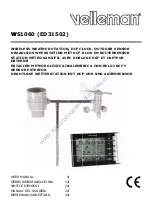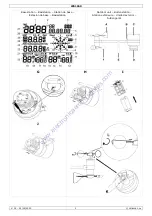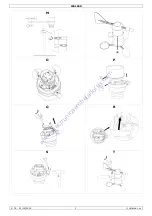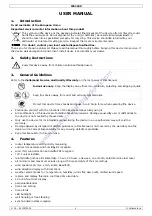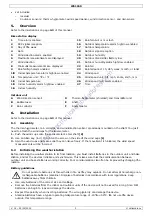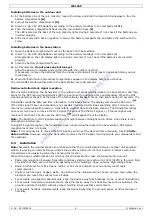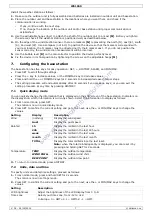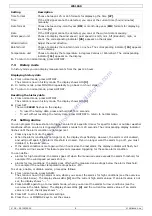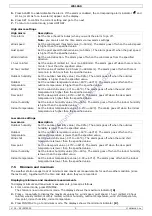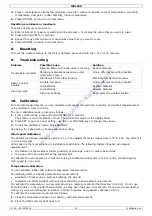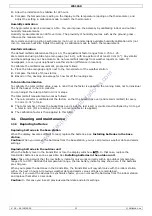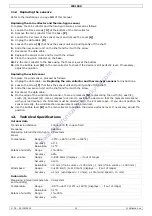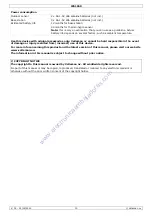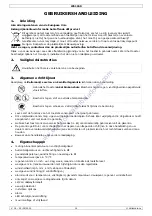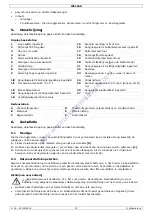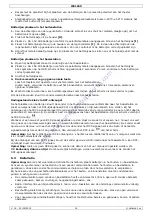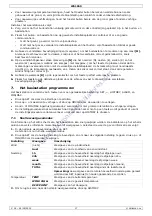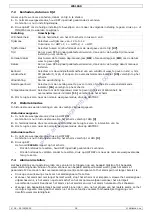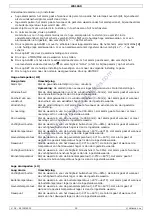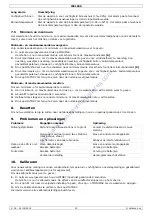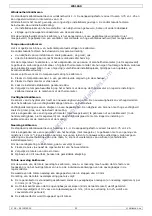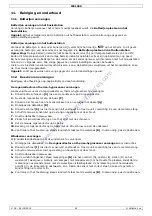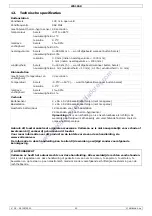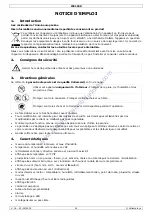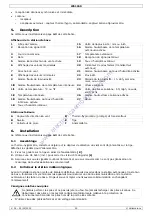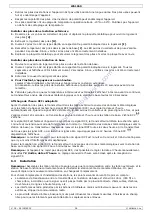
WS1060
V. 02 – 24/05/2012
11
©Velleman nv
3.
Allow the installation to stabilise for 48 hours.
4.
Compare the temperature reading on the display to the temperature reading on the thermometer, and
adjust the setting in calibration mode to match the thermometer.
Humidity calibration
The hygrometer sensor’s accuracy is ±5%. You can improve the accuracy by calibrating indoor and outdoor
humidity measurements.
Humidity measurements can drift over time. The proximity of humidity sources such as the ground, grass…
influence the measurement.
We recommend using a sling psychrometer (not incl.) or commercially available humidity calibration kits (not
incl.) to measure humidity. Adjust the setting in calibration mode to match the measurement.
Rainfall calibration
The default rainfall calibration setting is 1.0. The adjustment factor ranges from 0.75 to 1.25.
We recommend using a tube type rain gauge (not incl.), with an aperture of at least 10 cm (4”). Any smaller
and the readings may not be accurate. Do not use rainfall readings from weather reports on radio, TV,
newspapers, or even your neighbour’s weather station (difference in location).
To calibrate the rainfall measurement, proceed as follows:
1.
Place the tube rain gauge right next to the rain collector of the weather station.
2.
Compare the totals of three storms.
3.
Based on this, develop an average for how far off the readings are.
Total rainfall calibration
To calibrate the total rainfall value, keep in mind that the factor is applied to the running total, not to individual
tips of the bucket in the rain collector.
You can adjust the total rainfall in 0.3 mm steps.
The total rainfall measurement works as follows:
1.
The rain collector is calibrated at the factory so that the bucket tips over (and records rainfall) for every
0.3 mm (0.01”) of rain.
2.
The total number of times the bucket tips over (since the last reset) is counted and multiplied by 0.3 to get
a total in mm. (For a reading in inches, a conversion factor is applied.)
3.
The calibration factor is then applied to this total.
11.
Cleaning and maintenance
11.1
Replacing batteries
Replacing batteries in the base station
When the display becomes difficult to read, replace the batteries. See Installing batteries in the base
station.
Caution: When you remove the batteries from the base station, you lose all previous weather data and alarm
settings.
Replacing batteries in the outdoor unit
When the battery level in the transmitter is low, the display will show
. In that case, replace the
transmitter batteries as soon as possible. See Installing batteries in the outdoor unit.
Note: Take into account that the low battery indicator only works correctly within an outdoor temperature
range of 10~35°C. Outside this temperature range, the low battery indicator may show even if the batteries
are still good.
When you replace the batteries in the transmitter, the transmitter will resynchronise with the indoor station
within the next 3 hours. All previous weather data and alarm value settings are maintained.
However, if you want the devices to synchronise faster, you can remove the batteries from the indoor station
and replace them after 10 seconds.
Caution: In this case you lose all previous weather data and alarm settings.
www.electronicaembajadores.com

